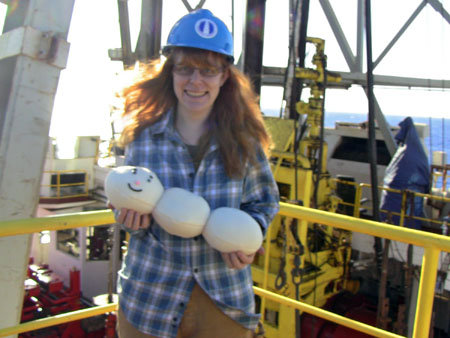
Logging
Logging? I don’t see any trees out here in the ocean! Oh, this is a different kind of logging. Today, we are going to learn a little about what is called logging.
After drilling is completed, some instruments are connected together one above the other so that the logging string (as it’s called) looks like a long pencil. The logging string is then lowered by a long wire down through the drill pipe until it reaches the bottom of the hole. The crew then starts to pull the logging tools back up and the instruments take measurements about the rocks that form the walls of the hole. That entire process took us about 6 hours yesterday and then it was repeated with different tools during the night. Logging tells the scientists how much storage space is within the rocks (porosity), how much fluid (water in this case) is present, the density of the rock, and it can be used to"see" the layers.
Helen Evans is a scientist (logging is her specialty) from Columbia University and Clayton Furman works for the company that made the logging tools. The photos below show the room where the logging data is collected and the logging operation out on the drill floor. As you can see, they are friends of mine.
This morning the crew is pulling the pipe out of the hole and later today, we will start traveling to our next location, which is southwest of here. It is going to take us about four days to get there.

.jpg)
.jpg)
.jpg)